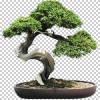I usually can't think of any good forum topics to start, so you can imagine how delighted I am to be posting this now.
I have been using this shader for objects that are at (0,0,0). The objects are usually just rotated with an arcball and all works fine. Today I translated the object -50 along X and well... just have a look:

Here is the FX file that I am using:
// DELighting structs
// ************************************************************
struct DELight_s
{
int Type;
bool Active;
bool LightingActive;
float4 Position;
float4 Diffuse;
float4 Specular;
float4 Direction;
float Attenuation;
float Range;
float Theta;
float Phi;
float Falloff;
};
struct DEAmbient_s
{
bool Active;
float4 Color;
};
// Variables
// ************************************************************
DELight_s DE1NALight : DENALIGHT1;
DEAmbient_s DEAmbient : DEAMBIENTLIGHT;
float4x4 DEWorld : DEWORLD;
float4x4 DEWorldViewProj : DEWORLDVIEWPERSPECTIVE;
float4x4 DEViewInverse : DEVIEW_INVERSE;
texture NormalTexture : DETEXTURE
<
string name="Dwarf_Normal.tga";
>;
texture ColorTexture : DEBASIC_MATERIAL_TEXTURE;
// The sample state for the basic texture
sampler2D NormalMap = sampler_state
{
Texture = (NormalTexture);
MinFilter = Linear;
MagFilter = Linear;
AddressU = Wrap;
AddressV = Wrap;
};
// The sample state for the basic texture
sampler2D ColorMap = sampler_state
{
Texture = (ColorTexture);
MinFilter = Linear;
MagFilter = Linear;
AddressU = Wrap;
AddressV = Wrap;
};
// Shader I/O structs
// ************************************************************
struct sVSIN
{
float4 Position : POSITION;
float4 Normal : NORMAL;
float2 UV : TEXCOORD0;
float4 Tangent : TANGENT;
};
struct sPSIN
{
float4 Position : POSITION;
float4 Normal : COLOR0;
float4 LightVector : TEXCOORD0;
float2 TexCoord0 : TEXCOORD1;
float2 TexCoord1 : TEXCOORD2;
};
// Vertex Shader
// ************************************************************
sPSIN VertexShader(sVSIN VIN)
{
// Create struct to send to pixel shader
sPSIN OUT = (sPSIN)0;
// Get the Eye Position
float3 World_Eye_Position = DEViewInverse[3].xyz;
// Calculate the transformed world vertex position
float3 World_Vertex_Position = mul(VIN.Position, DEWorld).xyz;
// Calculate light direction from the Nearest Active Light
float3 Light_Direction = World_Vertex_Position - DE1NALight.Position;
// Tangent
float3 T = mul(VIN.Tangent, DEWorld);
// Normal vector
float4 N = mul(VIN.Normal, DEWorld);
// Eye vector
float3 E = normalize(World_Eye_Position - World_Vertex_Position);
// Light vector
float3 L = normalize(-Light_Direction.xyz);
// Compute the tangent rotation matrix
float3 B = cross(T, N);
// Compute the 3x3 tranform from tangent space to object space
float3x3 Object_To_Tangent_Space;
Object_To_Tangent_Space[0] = T;
Object_To_Tangent_Space[1] = B;
Object_To_Tangent_Space[2] = N;
// Transform normal from object space to tangent space
OUT.Normal.xyz = 0.5 *
mul(Object_To_Tangent_Space, N) + 0.5.xxx;
// Transform light vector from object space to tangent space
OUT.LightVector.xyz = 0.5 *
mul(Object_To_Tangent_Space, L.xyz) + 0.5.xxx;
// Pass the calculated vertex position
OUT.Position = mul(VIN.Position, DEWorldViewProj);
// Pass texture coordinates
OUT.TexCoord0 = VIN.UV;
OUT.TexCoord1 = VIN.UV;
return OUT;
}
// Pixel Shader
// ************************************************************
float4 PixelShader(sPSIN PIN) : COLOR
{
// Get the bump normal
float4 Bump_Normal = 2 * (tex2D(NormalMap, PIN.TexCoord0) - 0.5);
// Get the color map color
float4 Texture_Color = tex2D(ColorMap, PIN.TexCoord1);
// Expand iterated normal to [-1,1]
float4 Normal = 2 * (PIN.Normal - 0.5);
// Expand iterated light vector to [-1,1]
float4 Light_Vector = 2 * (PIN.LightVector - 0.5);
// Compute self-shadowing term
float Shadow = saturate(4 * dot(Normal.xyz, Light_Vector.xyz));
// Calculate Annenuation
float Attenuation = 1/DE1NALight.Attenuation;
// Computer diffuse term
float4 Diffuse_Term = Attenuation *
saturate(dot(Bump_Normal.xyz, Light_Vector.xyz)-0.2);
return Texture_Color * (Diffuse_Term * Shadow + DEAmbient.Color);
}
// Technique
// ************************************************************
technique DETechnique
<float vs=1.1; float ps=2.0;>
{
pass Pass0
{
VertexShader = compile vs_1_1 VertexShader();
PixelShader = compile ps_2_0 PixelShader();
}
}
I messed around with it a bit and was unable to correct the problem. I'm almost certain that all of the data coming into the shader is good. So I guess this is where you guys tell me what I did wrong. [smile] ...Please!
[Edited by - noaktree on March 30, 2005 4:11:56 PM]
game development is liek a state of mind man.. it's liek when you liek... think... and then you liek make it fun++
- Yes I'm drunk.
 Here is the FX file that I am using:
Here is the FX file that I am using:








